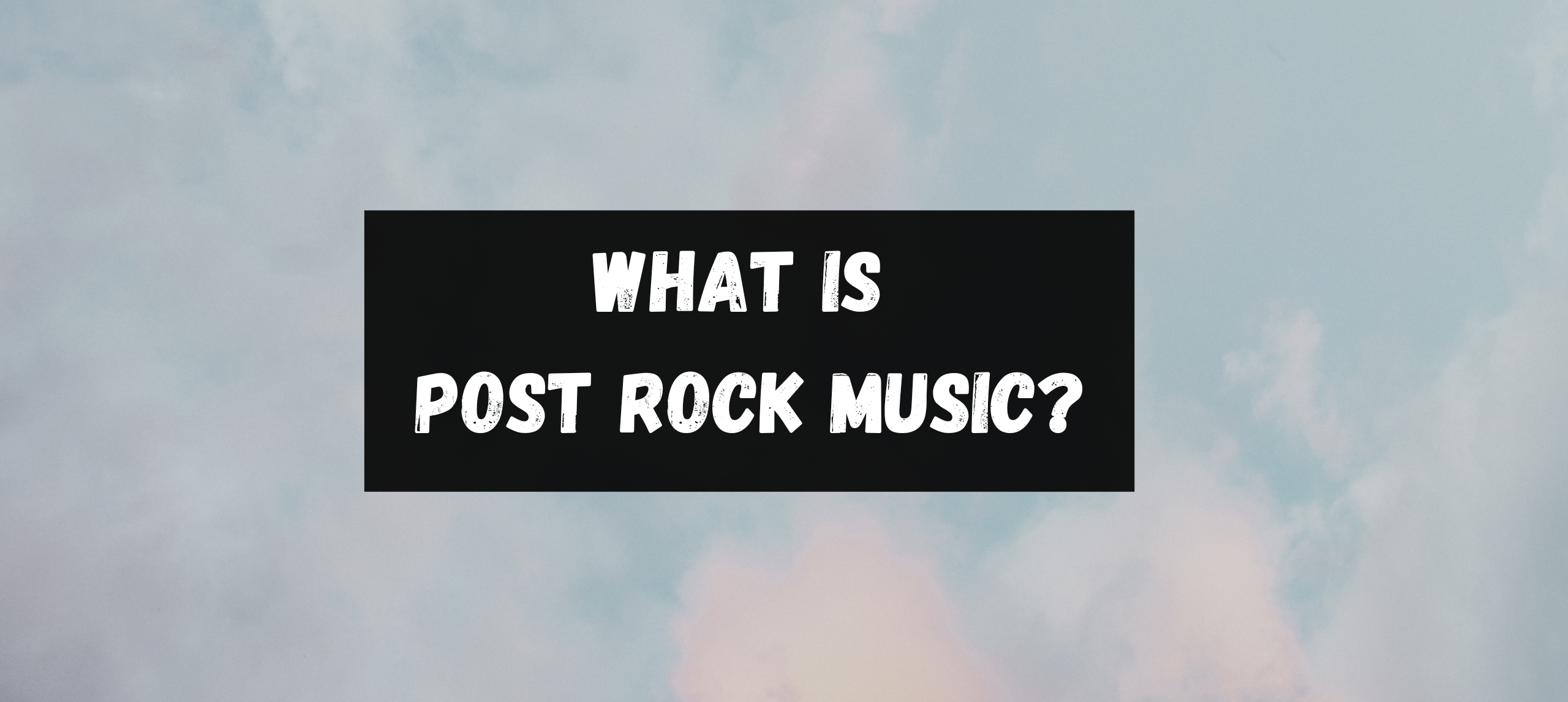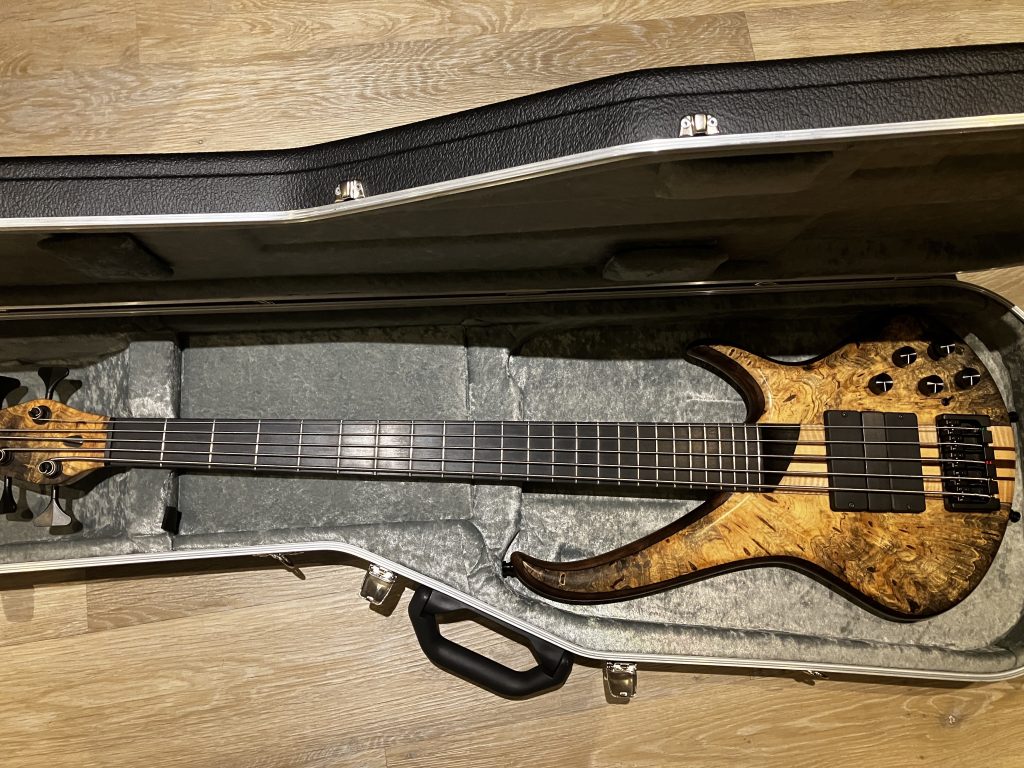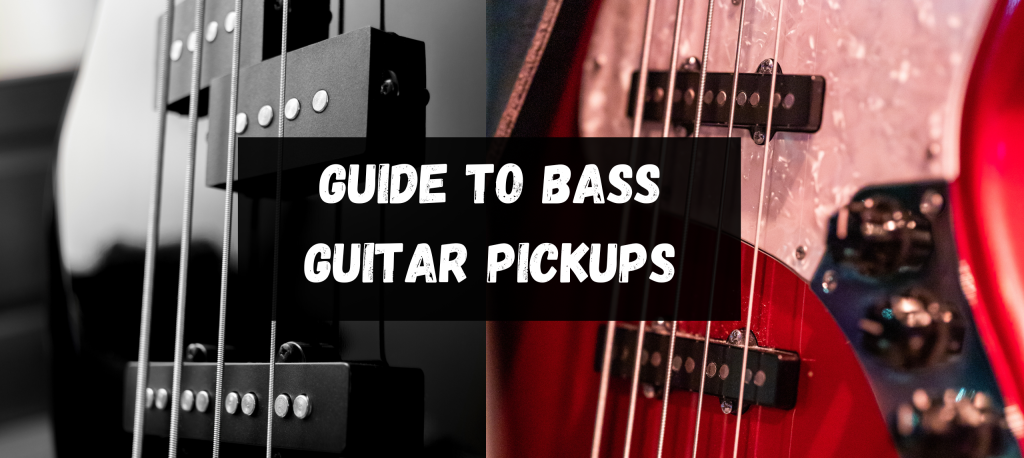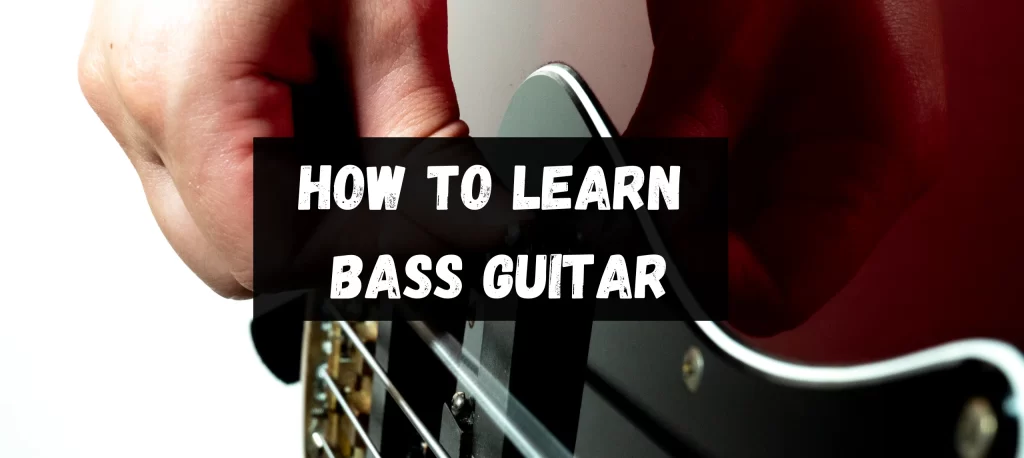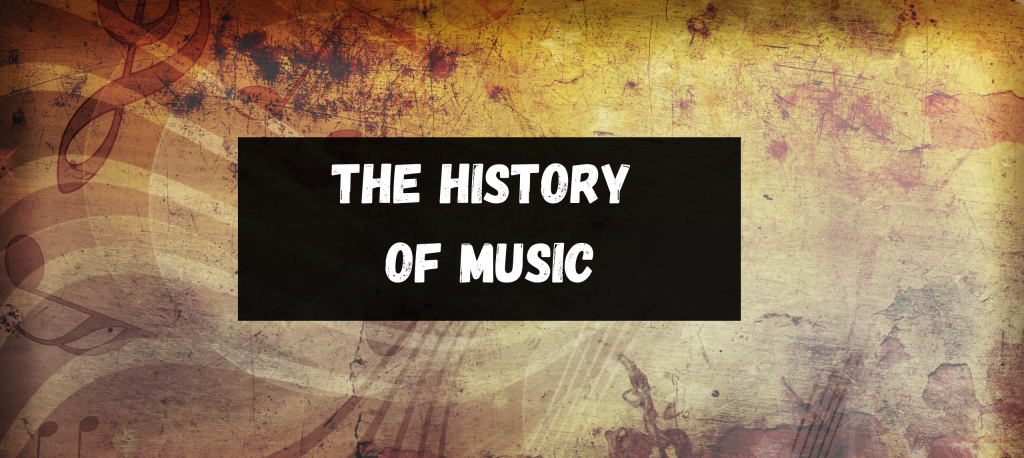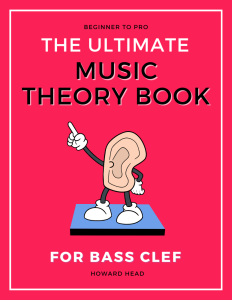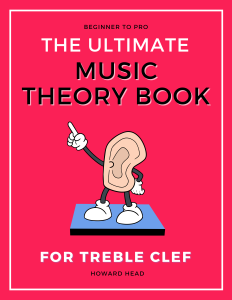August 24, 2023
Howard
From its subtle undertones to its sweeping crescendos, post-rock offers a transcendental experience, beckoning listeners into a realm where music becomes a canvas, painting vivid landscapes of sound. As we embark on a journey tracing the genesis of post-rock, prepare to delve deep into its rich tapestry, exploring the nuances that have shaped its identity. Stay with us, for ahead lies a narrative filled with revelations about this enigmatic musical phenomenon, and you will want to take advantage of every single note.
The Genesis of Post-Rock
Delving deep into the rich tapestry of music history, post-rock emerges as an enigma, a genre that breaks traditional conventions and offers a uniquely immersive experience. Let’s journey back to its roots and meet the pioneering spirits who charted this unexplored territory.
The Birth and Etymology: Tracing the origins of the term and its conceptual evolution.
- The term “post-rock” was believed to be coined in the early 1990s by music journalist Simon Reynolds.
- Unlike its name might suggest, post-rock wasn’t about succeeding or replacing rock but instead evolving and expanding its horizons.
- The genre’s essence lies in its defiance of the traditional verse-chorus structures commonly found in rock.
- By emphasising ambience and instrumentation, post-rock offers a sonic landscape that’s both vast and deeply introspective.
- As the genre evolved, it embraced many influences, from jazz to electronica, making it a truly eclectic musical form.
Demystifying Post-Rock’s Sound
As we delve deeper into the sonic realm of post-rock, we encounter a genre that is as much about the atmosphere as it is about melody, one that stretches the confines of traditional musical frameworks. But what truly makes post-rock’s sound unique, and how has it deviated so vastly from the familiar trails of rock?
Beyond Traditional Boundaries: Characteristics that set post-rock apart.
- Ambient Textures: Unlike many other genres, post-rock prioritises mood and atmosphere over traditional song structures, often resulting in expansive, ambient soundscapes.
- Diverse Influences: Drawing from a myriad of genres, including jazz, electronica, and classical, post-rock is a melting pot of musical experimentation.
- Emotional Journey: The genre takes listeners on an intensely passionate journey, often without words, allowing for a personal and intimate experience.
- Instrumental Prowess: Post-rock bands frequently showcase remarkable musicianship, innovatively using their instruments to produce novel sounds.
- Evolutionary Nature: Over the years, post-rock has continued to evolve, integrating modern electronic elements and pushing its boundaries.
Evolving Song Structures: The departure from conventional patterns.
- Post-rock often eschews the familiar verse-chorus-verse pattern found in mainstream rock.
- Extended, sprawling compositions are a hallmark, some tracks spanning well beyond the usual song length.
- Its structure is fluid, allowing for improvisation and spontaneity.
- Repetition is used as a tool for creating ambient textures and building tension.
- Progressions are slow-burn, gradually evolving and morphing over time.
A Symphony of Crescendos: The quiet-to-loud dynamic in post-rock.
- Many compositions begin with subtle, quiet introductions that slowly gain momentum.
- This gradual build-up culminates in intense, overpowering crescendos, providing an emotional release.
- This dynamic contrast adds a cinematic quality to the music, making it feel like a narrative journey.
- The use of this quiet-to-loud pattern helps in crafting deeply emotional and immersive listening experiences.
- It’s a technique that emphasises the ebb and flow of musical emotions.
Ethereal Instrumentation: The significant reliance on guitars and the atmospheric feel.
- Guitars, often layered with effects like reverb and delay, craft the lush soundscapes typical of post-rock.
- The genre is known for its extensive use of pedals and effects to achieve its distinctive sound.
- Instruments like the violin, cello, and even brass might be interwoven, further diversifying the sonic palette.
- Drums and percussion in post-rock often build atmosphere rather than merely keep rhythm.
- Electronic elements, such as synthesizers and samples, may also be integrated, blurring the lines between organic and digital.

The Role of Lyrics: From instrumental tracks to spoken word samples.
- Many post-rock tracks are entirely instrumental, letting the music communicate emotions.
- When vocals are present, they often take on an ethereal, almost chant-like quality.
- Lyrics, when used, tend to be abstract, adding another layer to the music’s atmospheric nature.
- Spoken word samples from films, speeches, or other sources are occasionally integrated to add depth or narrative.
- When employed, the human voice becomes more of an instrument, melding seamlessly with the ensemble.
The Evolutionary Journey of Post-Rock
Post-rock’s narrative isn’t just about its unique sound, but also its transformative journey. From underground stages to becoming a defining voice in the avant-garde music landscape, post-rock has experienced numerous milestones and has indelibly shaped the broader world of music.
Notable Milestones: Key moments and events in post-rock history.
- The late 1980s and early 1990s: Emergence of bands that deviated from traditional rock structures, laying the foundation for what would become post-rock.
- Mid to late 1990s: A surge in post-rock album releases, with the genre gaining wider recognition and critical acclaim.
- Early 2000s: Post-rock’s amalgamation with electronic, ambient, and neo-classical sounds, broadening its sonic palette.
- Recent years: An evident influence on soundtracks and ambient compositions, showcasing the genre’s versatility and dynamic potency.
Influential Albums: Releases that defined and reshaped the genre.
- “Spiderland” by Slint: Often considered a seminal post-rock record, its intricate instrumentals and eerie ambience set a precedent.
- “Lift Your Skinny Fists Like Antennas to Heaven” by Godspeed You! Black Emperor: A sprawling epic that encapsulates the crescendos and atmospheric beauty of the genre.
- “Ágætis byrjun” by Sigur Rós: With its ethereal soundscapes and otherworldly vocals, this album introduced many to the more melodic side of post-rock.
- “Young Team” by Mogwai: An influential release that showcased the intense dynamics and raw power of post-rock.
- “Laughing Stock” by Talk Talk: An album that goes deep into the recesses of the spiritual mind.
The Bands that Led the Charge: From Slint to Godspeed You! Black Emperor.
- Slint: Often regarded as pioneers, their sparse and intricate sound laid the groundwork for the genre.
- Mogwai: Their explosive dynamics and innovative approach made them one of the most recognisable names in post-rock.
- Godspeed You! Black Emperor: Known for their epic compositions, they have become synonymous with the genre’s grandeur and expressive depth.
- Explosions in the Sky: Their cinematic style has seen their tracks featured in numerous film soundtracks, broadening post-rock’s reach.
Post-Rock’s Impact: How it has influenced other genres and reshaped the musical landscape.
- Cinematic Soundtracks: Many filmmakers have turned to post-rock for its vibrant and atmospheric qualities, enhancing the cinematic experience.
- Ambient and Electronic: The overlap between these genres and post-rock has led to hybrid forms, expanding the sonic possibilities for both.
- Alternative and Indie Rock: Numerous bands have incorporated post-rock dynamics and textures, enriching their sound and approach.
- Neo-Classical Movement: Artists like Ólafur Arnalds and Nils Frahm have drawn inspiration from post-rock’s sprawling compositions and emotional weight.
- Music Festivals: The rise of post-rock-centric festivals and events, showcasing its enduring popularity and influence in the contemporary music scene.
The Appleseed Cast, The American Dollar and of course, Radiohead and Thom Yorke would also be highly worth checking out!
Navigating the Post-Rock Universe
As the beguiling realm of post-rock continues to evolve, it offers listeners a labyrinthine universe to explore. Immersive albums, informed blogs, and vibrant festivals illuminate its intricate corridors. For those eager to delve deeper, let’s embark on a guided journey through essential touchpoints in the post-rock cosmos.
Essential Resources for the Enthusiast:
Blogs, Reviews, and Channels: Keeping abreast of the latest in the genre.
Fragile or Possibly Extinct is a blog that provides in-depth reviews and chronicles the evolution of post-rock and ambient genres. For those inclined towards visual media, Post-Rock YouTube Channels, such as Worldhaspostrock and WherePostRockDwells, curate a vast selection of tracks and albums. Rate Your Music stands as a community-driven platform where fans rate and discuss their favourite albums, and the thriving subreddit community, r/postrock, is a digital haven for enthusiasts to share and celebrate all things post-rock.
Festivals and Labels: Celebrating post-rock on global stages.
Dunk! Festival in Belgium is a pilgrimage for many, recognised as one of the most significant post-rock gatherings. Over the pond, the Post. Festival in the USA celebrates both renowned and emerging artists in post-rock and post-metal. Regarding record labels, Constellation Records and Temporary Residence Limited have emerged as prominent names. The former home to the likes of Godspeed You! Black Emperor sits at the forefront of experimental sounds, while the latter, with its eclectic roster, has been instrumental in propelling post-rock luminaries to the global stage.
As we navigate this sonic landscape, it’s evident that post-rock isn’t just a genre; it’s an ever-expanding universe. With these resources, both seasoned fans and newcomers can chart a course through its vast terrains, experiencing the depth and diversity of its enigmatic offerings.
Dissecting Post-Rock Subtleties
Post-rock, with its dreamy soundscapes and immersive crescendos, often leaves listeners intrigued, spawning a myriad of questions. From drawing distinctions between seemingly similar genres to the incessant debates on notable bands, it’s time we address some of the most frequently asked questions and dispel the myths surrounding post-rock.
FAQs and Myths:
Post-Rock vs Post-Punk: Distinctions and overlaps.
- Origin and Aesthetic: While post-rock emerged in the ’90s focusing on instrumental soundscapes, post-punk found its roots in the late ’70s, retaining punk’s raw energy but infusing more experimental elements.
- Instrumentation: Post-punk is often marked by its jangly guitars and prominent basslines, whereas post-rock leans heavily on atmospheric guitar effects.
- Vocal Emphasis: Post-punk often centres around charismatic vocal performances, whereas post-rock might be instrumental.
- Rhythmic Structure: Post-punk carries a more rigid, rhythmic backbone; post-rock is fluid, often evolving in tempo and dynamics.
- Cultural Impact: Both genres made significant cultural imprints but in diverse ways, with post-punk challenging societal norms and post-rock focusing more on emotional landscapes.
The Prog Rock and Math Rock Intersection: Where post-rock finds common ground.
- Progressive Nature: Both post-rock and prog rock focus on pushing musical boundaries, evolving beyond traditional structures.
- Time Signatures: Math rock often employs complex time signatures, something occasionally found in post-rock compositions.
- Instrumental Mastery: All three genres value technical proficiency, but the expression differs – prog rock might flaunt it, post-rock hides it beneath layers, and math rock often fuses both approaches.
- Album Constructs: Like prog rock’s epics, post-rock bands favour concept albums that tell stories or explore themes.
- Influence: While they may sound different on the surface, it’s not uncommon for bands in one genre to cite those from another as influences.
Radiohead’s Affiliation: Exploring the band’s relationship with the genre.
- Experimental Approach: Radiohead, especially in albums like “Kid A”, aligns with the post-rock ethos of experimentation.
- Genre Fluidity: Radiohead has never been confined to one genre; their soundscape blends elements of rock, electronic, and yes, even post-rock.
- Influence: Their ability to evolve has seen them influence post-rock bands and vice versa.
- Ambient Layers: Tracks like “Treefingers” showcase their affinity for post-rock’s atmospheric characteristics.
- Not Purely Post-Rock: It’s crucial to understand that while they incorporate elements, Radiohead isn’t strictly a post-rock band.
Crafting Post-Rock: Techniques and tips for aspiring musicians.
- Embrace Atmosphere: One of post-rock’s defining characteristics is its ambience. Using reverb and delay pedals can help achieve this ethereal sound.
- Dynamic Range: It’s about the journey, from soft, delicate sections to overwhelming crescendos.
- Limitless Instruments: While guitars play a prominent role, don’t be afraid to incorporate diverse instruments, from violins to synths.
- Narrative Over Structure: Instead of traditional songwriting structures, focus on creating a musical history or journey.
- Evolve and Experiment: Don’t be tied down. The essence of post-rock is evolution, so keep exploring and pushing boundaries.
Each of these aspects, be it the distinctions between genres or the techniques to craft post-rock, illuminates the multi-faceted beauty of this enigmatic genre. By delving into these subtleties, listeners and musicians alike gain a more profound appreciation for post-rock’s rich tapestry.

Post-Rock’s Legacy and Future
In a world ever fluctuating with musical trends, post-rock stands as a testament to the power of innovation and raw emotional depth. Yet, as with every genre, questions arise regarding its sustainability and relevance in the future. Let’s examine post-rock’s current standing, its profound legacy, and the potential paths it might tread in the coming years.
The Current State and Forward Momentum: Is post-rock fading or merely evolving?
- Modern Innovations: Many contemporary post-rock bands incorporate electronic, ambient, and even world music elements, indicating evolution rather than stagnation.
- Mainstream Appeal: While post-rock remains niche, its atmospheric soundscapes are often favoured in soundtracks and commercials, granting it a broader audience.
- Live Experiences: Festivals dedicated to post-rock are evidence of its thriving live scene, with performances often described as transcendent.
- Independent Ethos: Post-rock’s DIY spirit persists, with bands frequently releasing music independently, ensuring authenticity and creative control.
- New Horizons: As with any genre, post-rock has its ebbs and flows. While it may not dominate charts, its dedicated fanbase and inherent adaptability ensure its continuation.
The Indelible Mark: Post-rock’s enduring influence in the broader music sphere.
- Cross-genre Inspiration: Bands from various genres, from indie rock to ambient electronica, often cite post-rock acts as significant influences.
- Emphasis on Atmosphere: The post-rock focus on creating immersive musical experiences has seeped into various genres, pushing artists to craft mood-centric pieces.
- Instrumental Narratives: The genre’s often lyric-less storytelling has encouraged musicians across the board to explore instrument-driven narratives.
- Tech Advancements: Post-rock’s heavy reliance on pedals and effects has played a part in advancing music technology, with many companies now producing gear tailored to the genre’s needs.
- A Cultural Staple: Beyond just music, post-rock’s aesthetics and philosophy have influenced broader cultural spheres, from film-making to literature, underscoring its profound legacy.
As we look to the horizon, post-rock’s essence remains intact: an exploration of sound and emotion unfettered by convention. Whether it’s the genre’s adaptability or its profound influence on the broader musical landscape, post-rock’s legacy is undeniable, and its future remains promising.
Wrapping Up: Celebrating Post-Rock’s Ethereal Beauty
Post-rock is one of the music world’s most enigmatic genres, offering listeners an escape into expansive, atmospheric soundscapes. Its contribution to the broader musical canon isn’t just sonic; it’s philosophical, challenging conventional approaches to songwriting and sound production. As we draw this exploration to a close, it’s essential to pause and appreciate post-rock’s unique allure and its enduring mark on countless listeners and artists alike.
While it may never dominate the mainstream in the same way pop or rock might, post-rock’s power lies in its niche appeal. It beckons listeners who crave depth, nuance, and a departure from the norm. Artists within the genre craft each track as an experience, inviting us to lose ourselves in waves of sound, emotion, and atmosphere.
As music continues to evolve, genres will rise and wane in popularity. Yet, post-rock’s lasting impression on the world ensures it will never fade into obscurity. Instead, it will be celebrated as a genre that dared to be different, that embraced the abstract, and that offered solace to all those who sought refuge in its expansive embrace.
What is rock music? What is indie rock music? What is Alternative Rock music? What is Grunge music? What is Shoegaze music?
Think You Kow? Doubt It.

Howard Head
I turn confused bass enthusiasts into bass gods through a simple and logical process.

